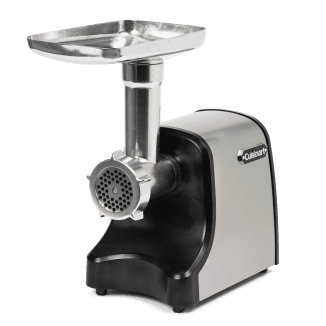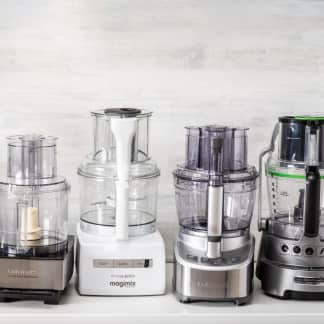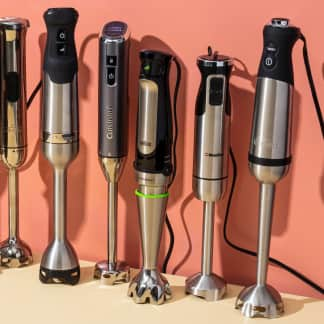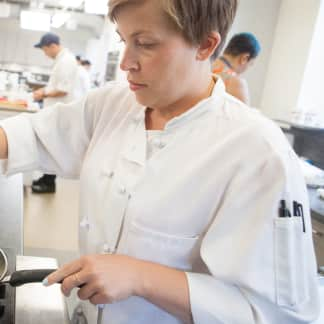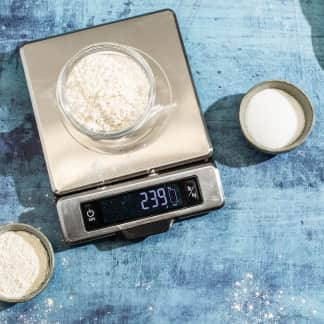To control the quality and freshness of your ground meat, you might want to get a meat grinder. Our winner, the LEM Products #8 575 Watt Countertop Grinder, delivered uniformly ground beef that we formed into tender burger patties and bulk ground sausage that cooked up snappy and juicy. The KitchenAid Metal Food Grinder Attachment is a touch less user-friendly, but it’s a great alternative if you already own a KitchenAid stand mixer.

Cooking with freshly ground meat has many advantages over using store-bought meat. It allows you to tinker with recipes. You can combine different cuts of meat and customize the lean-to-fat ratio. You can even add herbs and seasonings as you make sausage so that those ingredients are perfectly incorporated. The result? Food with the flavor, texture, and fat level of your dreams.

A meat grinder typically consists of five parts: a base where the motor lives, a meat hopper (“meat pan”), an L-shaped grinding head that connects to the hopper and houses the auger (“worm”), a blade (“knife”), and a perforated grinding plate. With the motor running, you feed partially frozen cubed meat into the hopper and let the cubes fall down the chute. The auger threads them onto its spiral, sending them to the blade and the perforated grinding plate, which work in a synchronized motion to grind the meat into uniformly sized pieces that come out in long strands. The diameter of the perforations determines the coarseness of the result—the smaller the holes, the finer the ground meat. We tested seven meat grinders, two of which were KitchenAid attachments (one metal and one plastic).

All grinders we tested came with multiple grinding plates. When grinding beef for burgers, we used 8-millimeter plates or the one closest to that size, which Lead Butcher Dave Kemery of Savenor’s Butchery and Market said is standard for making patties. Our sausage recipe suggests using a coarse plate, so we used the coarsest option included with each machine.
Some of the grinders in our lineup included numbers in their product names that correspond to the size of the grinders. Meat grinders can be categorized into three groups: small grinders for home use, small commercial grinders, and large-scale commercial grinders. We limited this testing to small grinders meant for home use.


We took a field trip to a butcher shop to learn how commercial grinders work (left); we also invited a professional butcher to demonstrate some meat grinder best practices (right).
To find the best meat grinder, we ground 60 pounds of pork and beef, but you can grind chicken, lamb, fish, and any game meat in a meat grinder. We also tried our hand at stuffing sausage links. Read on for our findings.
What to Look For
- Metal Grinding Components: If meat warms up too much as it moves through the grinder, it softens and can “smear,” creating a paste-like mess that clogs the machine. Metal meat hoppers, augers, blades, and grinding plates stayed colder for longer than parts made from plastic, making it more likely that the meat emerged from the grinder in appropriately coarse yet uniform pieces.

- Heavy Bases: Models with bases that weighed at least 5 pounds stayed steady on the counter throughout our tests.
- Wide Chutes: We liked meat hoppers with chutes that were at least 1.5 inches wide. We could cut meat into fairly large pieces, which minimized our prep time. Wide chutes allowed for smoother and faster grinding than narrow chutes.

- Spacious, Deep Meat Hoppers: To keep meat cold, you have to work quickly. Big, spacious meat hoppers (about 10 inches long by 5 inches wide and 1.5 inches deep) could hold large piles of meat, allowing us to transfer over all our meat at once and then focus on nudging it into the chute towards the auger.
Nice to Have
- Sausage Attachment: We also appreciated having specialty tools for sausage making.
What to Avoid
- Narrow Chutes: Grinders with chutes that were less than 1.5 inches wide were slower to use and more difficult to clean. We had to cut the meat into smaller pieces, which slowed us down. It also meant more individual pieces of meat for the grinder to process.
- Light Bases: Models with bases that weighed less than 5 pounds were wobbly and shaky when grinding.
- Hard-to-Attach Grinding Heads: The grinding heads have to be locked onto the base of each machine. Some twisted or slid smoothly into place and could be secured easily. We didn’t like that some models required finagling, which was especially difficult given that the metal parts were freezing cold and uncomfortable to hold for long periods of time.


We had to work through the partially frozen meat quickly so everything stays cold. Large hoppers allowed us to load more chunks of meat at once.
- Small, Shallow Meat Hoppers: One meat hopper was just a half-inch deep and could only hold a small amount of meat. Repeatedly reaching for cubes of chilled meat and transferring them to the meat hopper slowed us down and took our attention away from the grinding process.
Other Considerations
- Height: When the models were assembled, most meat hoppers were roughly 14 inches above the counter. They were easy to reach, and we could peer inside the chute to monitor the progress. With the two attachments to the KitchenAid stand mixer, however, the meat hoppers were affixed to the head of the stand mixer at a height of 21 inches, which was above eye level for some testers. It wasn’t a deal-breaker, but it limited our ability to see, which was particularly important for ensuring the consistent, steady flow needed for many applications, such as making sausage links.

The Tests
- Prepare and cook Fresh Garlic Bulk Sausage using a coarse plate, if available, comparing to sausage prepared with a food processor
- Prepare Grind-Your-Own Sirloin Burger Blend using an 8-millimeter plate or the closest to it, comparing to ground beef prepared with a food processor
- Clean grinder parts by hand between uses, according to manufacturer instructions
- Winners only: Grind 10 pounds of pork butt
- Winners only: Make sausage links
How We Rated
- Performance: We evaluated how quickly each grinder processed the meat. We compared the appearance and texture of the ground pork and ground beef, noting if they were even and if they contained unground muscle, fat, and sinew.
- Ease of Use: We assessed how easy it was to assemble, use, and disassemble each grinder.
- Versatility: We checked whether each model came with an assortment of grinding plates that would allow users to customize the coarseness of the meat and make sausage links.
- Cleanup: We noted how easy it was to wash and maintain each grinder and its parts.




